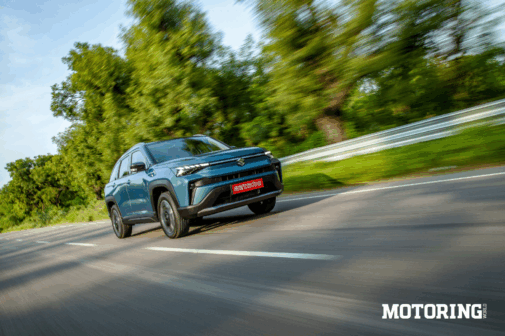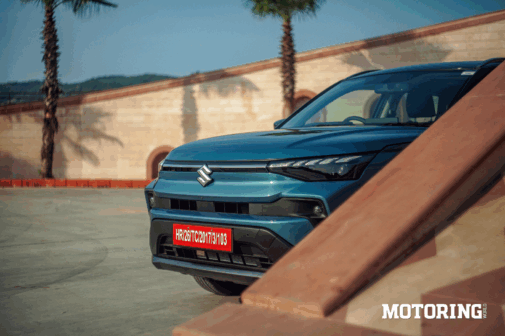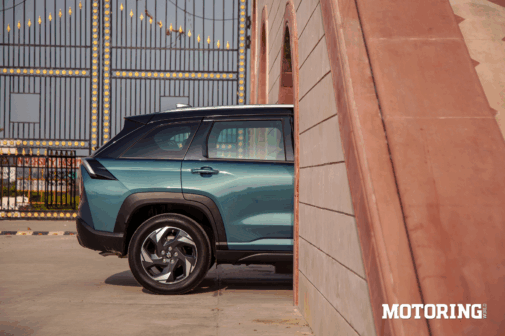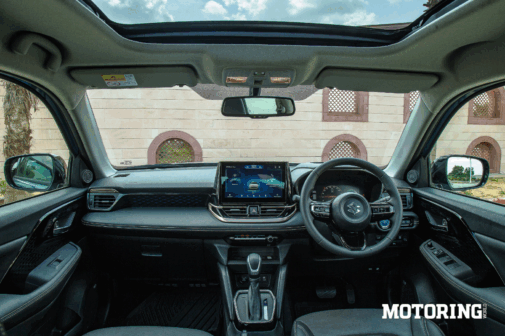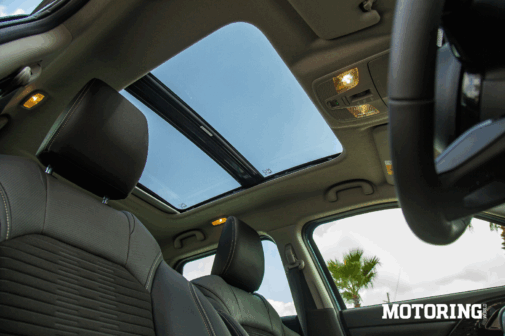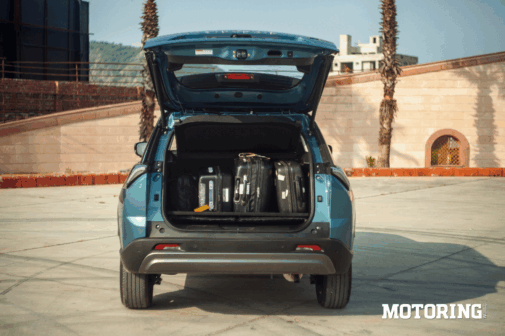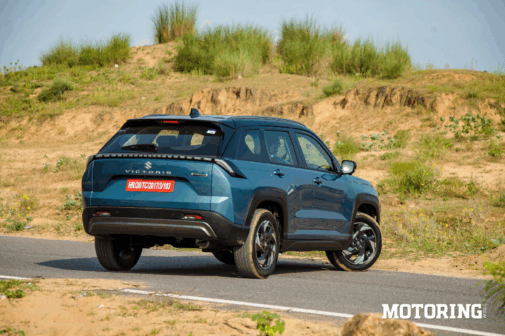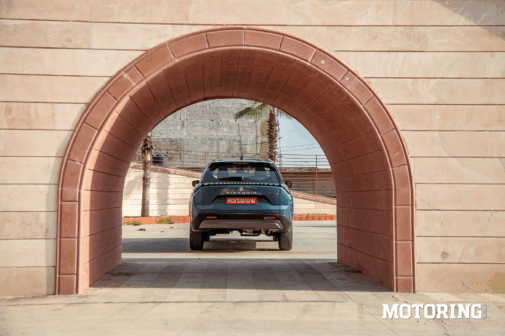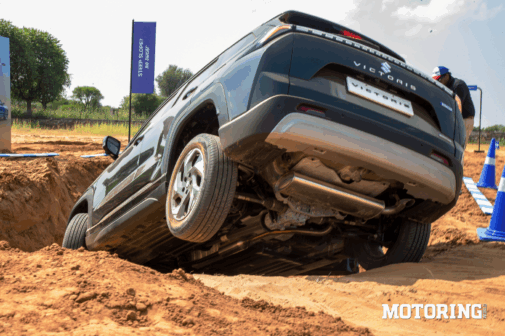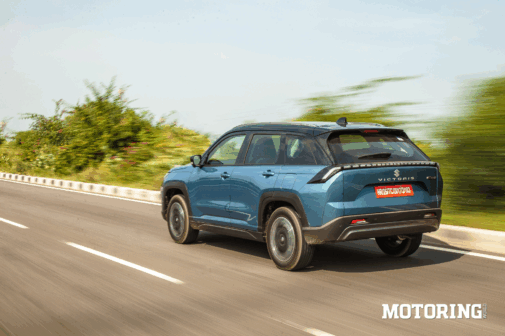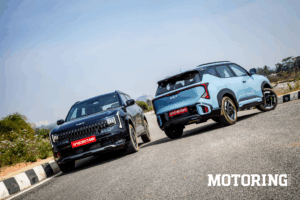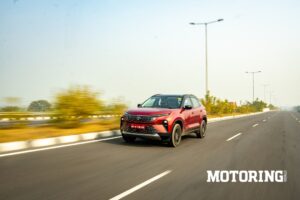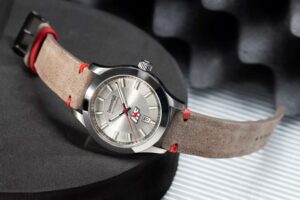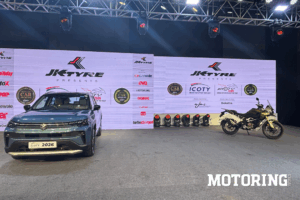When a market leader like Maruti Suzuki makes a move, the entire industry pays attention. They are renowned for their meticulous market study, deep understanding of consumer sentiment, and an uncanny ability to gauge the national pulse. So, when they decide to not just enter but create a new segment, you know it’s a development to be taken very seriously.
That’s exactly my mindset regarding their latest product, the Maruti Suzuki Victoris. The first surprising decision? It’s a showroom destination. Surprisingly, this premium-looking SUV is targeted for their mainstream Arena showrooms, not the premium Nexa channel. This is a fascinating strategic choice because, at first glance, the Victoris is undeniably a premium offering. Its design language, which we’ll delve into shortly, and its paper specifications suggest Maruti Suzuki has come prepared to make a significant impact.
The name itself, ‘Victoris,’ has been the subject of much rumour and speculation. It’s a strong, confident name that seems to imply a strategy we’ve seen before: enter the segment later, understand it completely, and then dominate. But does the substance back up the ambitious name?
We’ve come to the vibrant city of Jaipur to put this highly anticipated SUV through its paces. On paper, the specs and data add up to some genuinely impressive stats. Now, it’s time to see what the Maruti Suzuki Victoris truly delivers on the ground.
The morning of the drive began with the familiar early call time; we were out the door and behind the wheel by 7 AM. But before even stepping into the car, it was the design that truly commanded attention.
Maruti Suzuki as a brand, does not have a distinct design language, but with the Victoris, that narrative takes a decisive turn. The brand has delivered a surprisingly mature and refined design—one that feels coherent, premium, and deliberately uncluttered. There are no excessive lines or fussy details; instead, the Victoris presents a clean, confident silhouette.
The first impression it leaves is distinctly European—sophisticated, understated, and solid. Up front, it features sleek new LED DRLs and a redesigned bumper, while at the rear, a full-width LED light bar embedded in the tailgate gives it a modern and upscale presence. All lighting is LED, reinforcing its premium intent. The profile is enhanced with 17-inch dual-tone alloy wheels and silver roof rails, completing the elegant yet purposeful stance.
Offered in a palette of 10 colours across six variants, the Victoris doesn’t just look the part—it feels like Maruti Suzuki’s most deliberate step yet into the world of aspirational design.
With the exterior’s sophisticated design making a strong first impression, it was time to step inside and experience the cabin of the Maruti Suzuki Victoris. The interior does not disappoint, immediately establishing a modern and tech-forward environment.
The centrepiece is the new, sleek dashboard layout dominated by a massive 10.1-inch touchscreen infotainment system and a fully digital 10.25-inch driver’s display. More importantly, Maruti has introduced a brand-new operating system, and I’m happy to report it’s remarkably responsive. The interface is smooth, intuitive, and refreshingly free of the lag that plagues some systems in this very segment.
Easing out of the parking lot, the high-definition rearview camera provided an exceptionally clear and crisp image—so good, in fact, that its quality rivals, and arguably surpasses, systems found in some German luxury cars.
Another standout feature Maruti is touting is the Dolby Atmos music system, and it absolutely lives up to the hype. The soundstage is immersive, the clarity is stunning, and the output is powerful, setting a new benchmark for audio quality in this segment.
The cabin is packed with thoughtful premium amenities, starting with highly effective ventilated seats that cool you down rapidly. You also get the convenience of powered front seats and a hands-free powered tailgate that can be opened with a simple gesture. A large panoramic sunroof further enhances comfort, while modern connectivity needs are met with high-wattage 60W and 45W USB Type-C charging ports. The premium experience is rounded out by a useful Head-Up Display (HUD) that projects key information onto the windshield and ambient lighting that sets the mood.
The seats are supportive, leaning towards the firmer side to provide good bolstering on longer drives. Both legroom and headroom are generous for passengers front and rear. Finally, the boot space is practical and should easily accommodate luggage for weekend getaways. It’s worth noting that in the Strong Hybrid model, the boot floor is slightly raised to accommodate the battery, but this doesn’t significantly compromise the overall utility of the space.
The Maruti Suzuki Victoris truly sets itself apart with an incredibly diverse range of powertrain options, ensuring there’s a perfect match for every buyer. Under the hood, customers can choose from a 1.5-litre NA petrol engine paired with a mild-hybrid system, a strong-hybrid setup, or a CNG offering. Transmission choices are equally varied, including a five-speed manual, a six-speed torque converter automatic, and an e-CVT. For those seeking adventure, an AllGrip all-wheel-drive derivative is also available.
Our drive began in the Strong Hybrid variant, a powertrain familiar from the Grand Vitara. As we set off from Jaipur, it delivered exactly what we expected: seamless, silent electric propulsion at low speeds and a smooth, almost imperceptible handover to the petrol engine as momentum built. The low-end electric assist provides a confident, responsive pull away from traffic, while the petrol engine takes over effortlessly at higher speeds. While the e-CVT tuning could be slightly more engaging for enthusiasts, and the engine note becomes more pronounced when working hard at three-digit speeds, the overall refinement is impressive for the segment. The primary goal here is effortless efficiency, and the strong hybrid system delivers it superbly.
While we did not get to spend extensive time with the car to conduct a detailed real-world efficiency test, the Strong Hybrid variant we were driving consistently indicated an impressive 23.5 kpl on its trip computer during our mixed driving in Jaipur.
The first thing you appreciate is how incredibly easy the Victoris is to drive. The steering is light and precise, making it perfectly suited for its target audience: drivers who prioritise comfort, ease, and a stress-free experience in daily traffic. It’s a powertrain engineered for the masses, not just enthusiasts, and it excels in that role.
Out on Jaipur’s mix of highways and city streets, the Victoris ride quality emerged as one of its strongest virtues. The suspension is tuned explicitly for comfort, effortlessly absorbing bumps, potholes, and road imperfections with a soft, muted thump. It feels incredibly settled and composed, offering a plush, isolating experience that families will appreciate on long journeys. While the handling is predictable and secure, the focus is clearly on stability rather than sportiness. There is some body roll when changing direction quickly, but it’s well-controlled and communicates the car’s limits clearly. This is not a sharp, engaging driver’s car, but rather a calm, confident, and supremely comfortable cruiser—exactly what its target audience desires.
Although our primary drive was in the hybrid, Maruti ensured we experienced the Victoris’s rugged side with the AllGrip all-wheel-drive variant on a dedicated off-road track. The course was designed to challenge, featuring deep ruts, axle twisters, and a formidable 24-degree side incline. The Victoris tackled every obstacle with composed ease. The AllGrip system intelligently distributed power, maintaining traction and momentum without any drama. We navigated the entire course in remarkable comfort, truly without breaking a sweat, proving this SUV has genuine off-road credentials beyond its city-friendly demeanour.
A key demonstration involved opening the doors while the vehicle was positioned on a steep incline. This highlighted the exceptional rigidity of the new chassis, which remained completely torsion-free, allowing the doors to open and shut without a hint of strain.
This leads to the most significant takeaway from the drive: Maruti Suzuki has made a monumental leap in safety. The Victoris is equipped with a comprehensive Level 2 Advanced Driver Assistance System (ADAS), a first for any Maruti car. Available on the top ZXi+ variants, the suite includes features like adaptive cruise control, lane keep assist, and autonomous emergency braking. Our brief testing revealed the system to be smooth and unintrusive in its operation.
This technological commitment is backed by proven passive safety. The Victoris has dominated crash tests, achieving a perfect 5-star adult safety rating from both Bharat NCAP and Global NCAP. It scored a staggering 33.72 out of 34 points for adult occupant protection and 41 out of 49 for child occupant protection.
It’s great to see Maruti Suzuki stepping up by introducing ADAS for the very first time in one of its products, signalling a bold new direction for the brand. Not only does the new Victoris SUV debut advanced safety tech, but it also brings with it a completely refreshed design and a focus on democratising premium features for the masses. This is a clear shift towards giving customers a more upmarket experience without breaking the bank.
More importantly, Maruti now has a product that ticks plenty of boxes — from features and performance to safety and practicality. With prices starting at just Rs. 10.50 lakh (ex-showroom), the value proposition becomes even more apparent, especially when you line it up against the competition. The Victors isn’t just another SUV in a crowded market; it’s a strong statement from Maruti that they’re ready to play on a whole new level and take the competition head-on with this product.
AUTODATA
Maruti Suzuki VictorisPOWERTRAIN
Displacement:
Max Power:
Max Torque:
Max Power(ICE):
Max Torque(ICE):
Transmission:
1490 cc
79 bhp @ 3995 rpm
14.37 kgm @ 3995 rpm
91 bhp @ 5500 rpm
12.44 kgm @ 3800-4800 rpm
e-CVT
TYRES
F/R: 215 / 60 R17
DIMENSIONS
L/W/H (mm):
Wheelbase:
Ground Clearance:
Kerb weight:
Fuel Capacity:
4360/1795/1655
2600 mm
210 mm
1755 kg
45 litres
PRICE
Rs.19.99 Lakh (ex-showroom)










